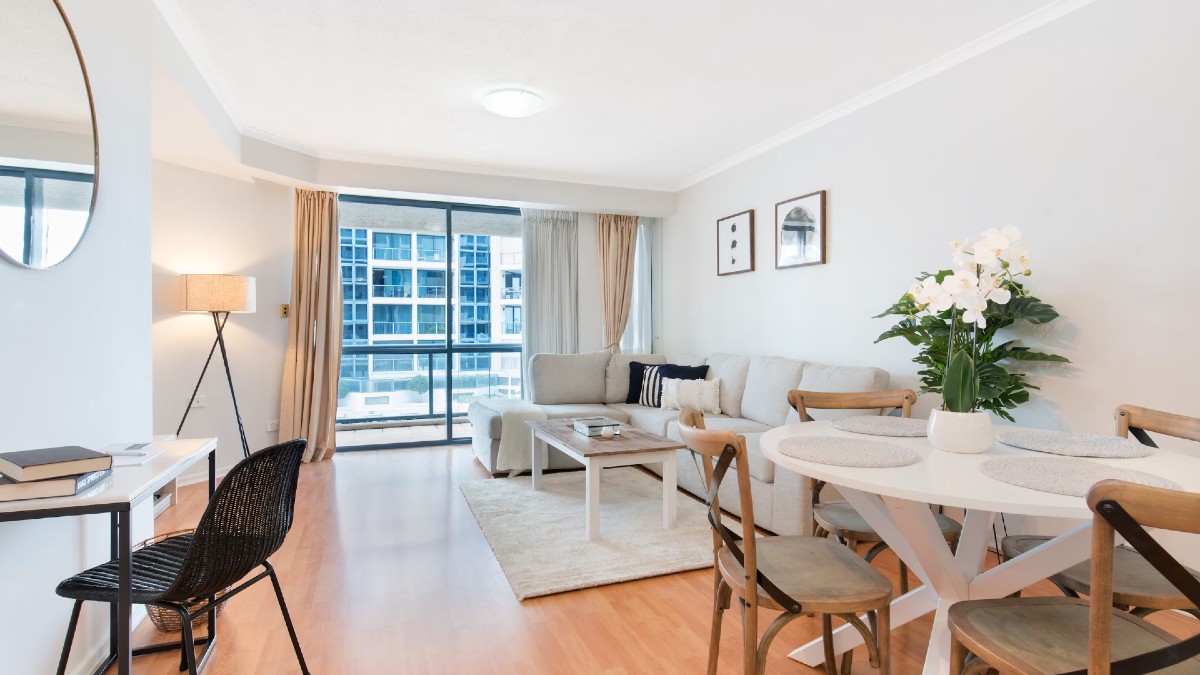Trying to decide between the stability of a fixed interest rate and the potential savings of a variable rate home loan? You're not alone. But what if there was a way to get the best of both worlds?
Enter the split home loan, a mortgage option that allows you to divide your loan into portions with different interest rates. This lets you tailor your loan to your financial goals and comfort level with interest rate fluctuations.
What is a split home loan?
A split home loan is a flexible mortgage option that divides your loan into parts with different interest rates. This structure allows you to tailor your loan to your financial needs and market conditions. You don’t need to split your loan into equal halves, you can split the loan whatever way you’d like (e.g. 60:40 split, or even an 80:20 split).
Typically, a split home loan consists of a fixed-rate portion, where the interest rate is locked for a set period of time (usually between one to five years), providing payment stability irrespective of market fluctuations.
The other part is a variable rate, which is subject to interest rate fluctuations, largely driven by changes in the cash rate as determined by the Reserve Bank of Australia (RBA). This offers potential benefits during periods of interest rate decreases.
A split loan offers a blend of predictability and adaptability, allowing you to benefit from fixed-rate security and variable-rate flexibility. The specific terms and balance between fixed and variable components may depend on your lender's policies and your financial goals.
How does a split home loan work?
To get a better understanding of how split home loans work, let’s use an example.
Sarah has a $500,000 home loan with a 30-year loan term and she decides to split her loan 60:40. She allocates $300,000 to a fixed rate portion at 3% for a five-year fixed period. The remaining $200,000 is assigned to a variable rate, which is currently 2.5%.
Sarah’s monthly repayments would come to an approximate total of $2,055. This combines:
-
Fixed repayment: $1,265
-
Variable repayment: $790
Let’s say that in 10 months' time, the market changes and the lender increases Sarah’s variable interest rate to 2.95%. Sarah’s monthly variable repayments would increase to $838, making her total monthly repayments $2,103.
If Sarah hadn’t fixed 60% of her loan, this increase would have been much higher.
This combination gives Sarah the dual benefits of certainty and flexibility. The fixed rate portion safeguards her from full exposure to rate hikes, while the variable rate offers opportunities for cost savings if interest rates fall. This setup is particularly suitable for borrowers who want to mitigate risks associated with interest rate changes while still maintaining some potential to benefit from favourable market conditions.
Our split loan calculator can help you find the right combination of fixed and variable interest rates to suit your needs.
Split home loan pros and cons
By splitting your home loan, you can enjoy the benefits of both fixed and variable rates while reducing the risks inherent with each option.
Split mortgage benefits
-
Security: The fixed component of your loan allows you to have some control protections from interest rate rises.
-
Flexibility: The variable component of your loan allows you to take advantage of any interest rate falls as well as extra features not generally offered with fixed rate loans.
-
Competitive rates: You can secure a competitive rate with the fixed component of your loan and use the variable component for the flexibility it can offer.
-
Unlimited repayment option: The variable component of your loan allows you to make unlimited extra repayments, allowing you to pay off the loan faster.
-
Offset and redraw facilities: These can be more commonly offered on variable rate loans but only on some fixed rate products. Offset and redraw facilities allow you to effectively reduce your loan amount, saving considerable amounts in interest over the life of your loan, while also allowing you access to any extra repayments should you need it.
-
Increased savings: The fixed component of your loan can help you save in times of rising interest rates or allow you pay increased interest payments on just the variable component of your loan.
Split mortgage disadvantages
-
Missing out on falling interest rates: The fixed component of your loan locks you into an interest rate that may not reflect lower interest rates being offered on the wider market. This means you don’t get the full benefit of interest rate drops.
-
Getting hit by higher repayments: On the flip side, you will need to commit more money to repayments for the variable component of your loan as interest rates rise.
-
Break fees: If you wish to change the fixed component of your loan for any reason, you may be subject to fees or penalties. These will generally apply even if you wish to roll the fixed component of your loan into the variable component with the same lender. Fees usually also apply if you have a windfall and wish to pay your loan out.
-
Fee double up: Depending on your lender, you may be hit twice with establishment and ongoing fees charged on both the fixed and variable components of your loan.
When should you use a split home loan?
A split home loan could be an ideal choice if you're apprehensive about potential interest rate hikes. This type of loan offers a mix of security and flexibility. If you believe an interest rate hike is coming, you can partially protect yourself by fixing a portion of your loan, safeguarding you against rising interest rates during that term.
Meanwhile, the variable rate portion allows benefits like using an offset account to reduce interest. This dual-structured loan grants the advantages of both fixed and variable rates, providing a blend of predictability in repayments and adaptability to market changes. After the fixed term, you can choose to fix the rate again or switch to the prevailing variable rate.
Other considerations
Bear in mind, a split loan is usually a feature within a home loan package, very rarely a product within itself. This means you can ask lenders what they can offer in terms of splitting your loan but be warned, it can come with extra paperwork and, as discussed, extra fees. Here are a few things to consider when searching for a suitable split home loan:
-
Feature benefits vs. costs: Evaluate whether the additional features of the loan package justify the costs associated with splitting your loan.
-
Setup fees: Seek lenders who offer low or no setup fees for each loan split.
-
Repayment flexibility: Be clear on what the fees or penalties are for making extra payments on the fixed component and enquire as to whether you can avoid additional repayment fees for both components of your loan.
-
Customisation options: Investigate the degree of customisation available for splitting your loan (e.g., the proportion of fixed vs. variable) and the term lengths for the fixed rate. There is no general rule when it comes to the make-up of your loan. You should be able to split it however you want - 50:50, 60:40, or 80:20 - whichever best suits your purposes. This is where our split loan calculator is useful in weighing up the combinations. Some lenders will even allow you to split your loan up to four ways, providing plenty of flexibility to customise your loan structure.
-
Ability to customise split term: As with other fixed rate terms, you should be able to choose the period of time your rate will be fixed and your loan will be split. You also need to be clear on fees should you choose to re-fix a component of your loan after the initial fixed rate period expires.
-
Refinancing a split loan: It is possible to refinance a split home loan although the process can depend on the terms and conditions of your original split loan and the policies of any new lender you are considering. Refinancing will likely involve similar steps to refinancing a standard variable or fixed loan but can be more involved given you effectively have two loans. Refinancing should give you the opportunity to adjust your split components or consider whether it may be best to consolidate into one loan.
First published on September 2019
Photo by Enrico Carcasci on Unsplash

Ready, Set, Buy!
Learn everything you need to know about buying property – from choosing the right property and home loan, to the purchasing process, tips to save money and more!
With bonus Q&A sheet and Crossword!



 Bernadette Lunas
Bernadette Lunas
 Denise Raward
Denise Raward
 Harry O'Sullivan
Harry O'Sullivan
 Harrison Astbury
Harrison Astbury
 Emma Duffy
Emma Duffy

